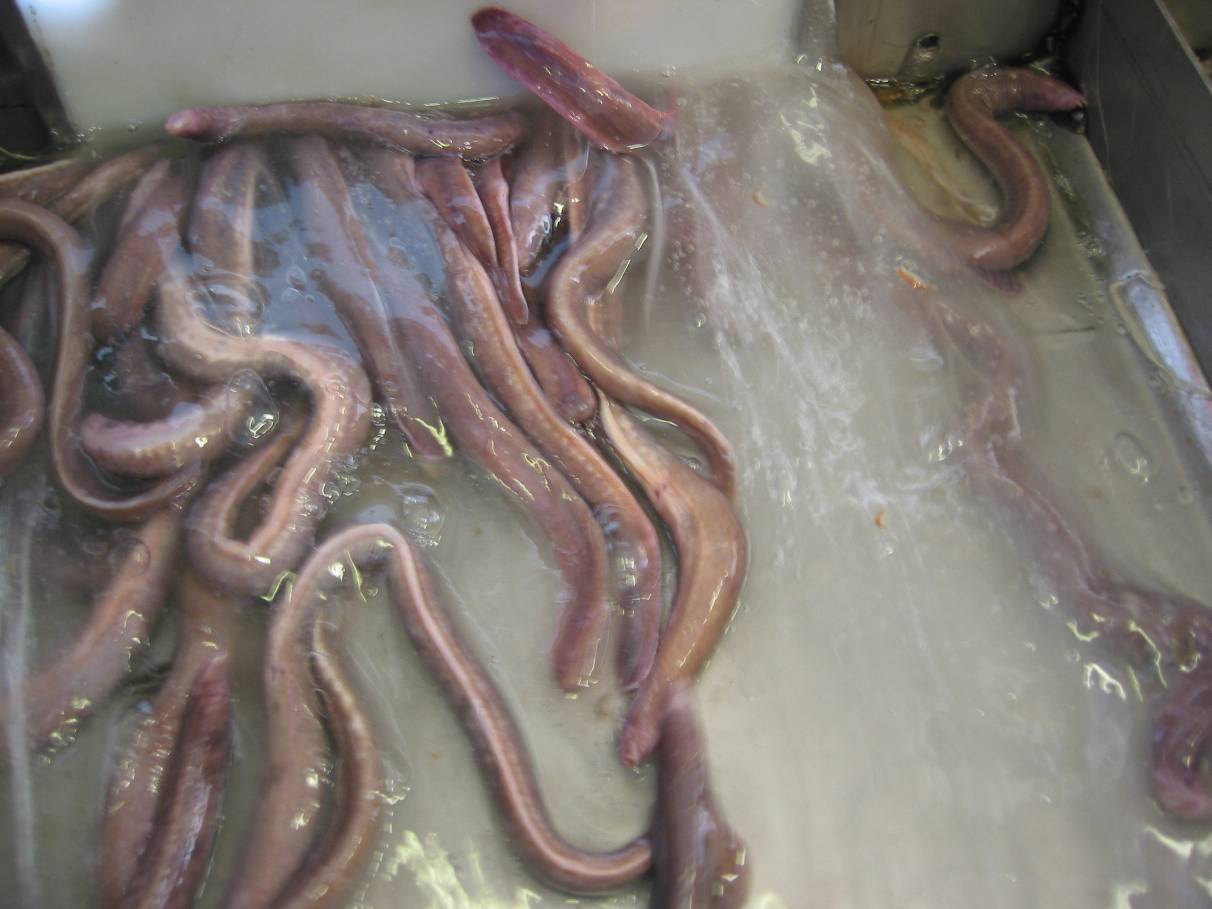Hagfishes and Slime

Hagfishes are an ancient group of bottom dwelling marine animals that are best known for their ability to produce vast volumes of defensive slime when they are attacked. In the Comparative Biomaterials Lab, we have been working to understand the inner workings of hagfish slime and how it does what it does. Photo of Pacific hagfish by Andra Zommers.
The easiest way to understand what hagfish slime does is to watch the following videos taken by Vincent Zintzen’s group at the Museum of New Zealand. In these movies, you’ll see hagfishes repelling nine different species of fish predators with their unique sliming behaviour. To find out more about how hagfish slime works, check out the Research menu link above. You can also find links to our publications, which will provide even more detail.
Although fishes have a hard time preying on hagfishes because of the danger the slime poses to their gills, air breathing predators like marine mammals and diving birds have no such issues. On the left is a movie of an elephant seal eating a Pacific hagfish (Eptatretus stoutii) at a depth of about 900 meters. The susceptibility of hagfishes to air breathing predators and their apparent immunity to fish predators may explain the distribution pattern of most hagfishes, which tend to be found at depths that are greater than most air breathers can reach. For more information on how this movie was obtained, visit Ocean Networks Canada.

Hagfishes do lots of amazing things, like making buckets of slime and feeding through their skin, but one of their most impressive tricks has to be their ability to tie themselves in knots. Knot tying is used by hagfishes to wipe slime off themselves if they get tangled up in it, and it is also used during feeding as a way to brace themselves against a carcass so they can tear off pieces to eat. This amazing behavior can be seen here, on Andrew Clark’s website at the College of Charleston. Photo of knotted hagfish by Christine Ortlepp.

Hagfishes have likely been around on planet Earth for about 500 million years. There are currently about 80 species of hagfishes that have been described, and this number has been growing steadily as we continue to explore deep sea habitats, where most hagfish species live. In spite of their evolutionary staying power, many hagfish species are at risk due to exploitation by humans. In Asia, several species of hagfishes are harvested for food and their skin is used to make leather, and the demand for these products is putting pressure on hagfish populations, not just in Asia, but around the world. In a 2011 paper by Knapp et al., the authors found that of the 76 species examined, nine of them were either critically endangered, endangered, or vulnerable. They found that 23 others faced “significant major threats.”
Hagfishes are important not only as glimpses into the deep evolutionary history of animals, but as highly effective scavengers, they also provide important ecosystem services by ridding the ocean bottom of rotting carrion. Their burrowing is also believed to be an important source of substrate turnover. Because of all the amazing adaptations they possess, we view hagfishes as valuable biomimetic models that could inspire new products and solutions to problems we can’t yet foresee.
Although there are no organizations (yet!) focused on the well-being of hagfishes, there are lots of things you can do to help the cause of hagfish conservation, such as supporting groups that work to preserve marine species and ecosystems, especially those that focus on the deep sea, such as the Deep Sea Conservation Coalition.
Photo of Atlantic hagfish (Myxine glutinosa) by Wade Hiscock.